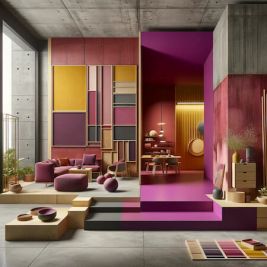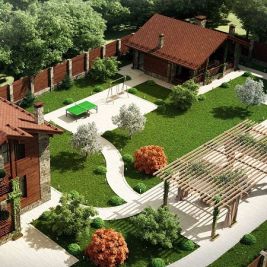
Innovative Skyscrapers Reshaping Urban Skylines
As cities continue to expand vertically, innovative skyscrapers are not just altering skylines but also setting new benchmarks for architectural design and sustainability. From the crystalline structures in Saudi Arabia designed by Zaha Hadid Architects to Bjarke Ingels Group's terraced tower in New York, these skyscrapers showcase the future of high-rise architecture.
 Innovative Skyscrapers Reshaping Urban Skylines
Innovative Skyscrapers Reshaping Urban Skylines
The Crystalline Skyscraper by Zaha Hadid Architects
At the heart of Saudi Arabia's ambitious Neom development lies a spectacular new addition—a 300-meter-tall skyscraper designed by Zaha Hadid Architects. This structure is part of the Trojena ski resort and stands above a central lake, integrating seamlessly with the rugged mountain terrain. The design is not only a testament to modern engineering but also a piece of art that complements its natural surroundings.
The Spiral by BIG in New York
In New York, the recently completed Spiral skyscraper by the Danish studio Bjarke Ingels Group offers a fresh take on urban office environments. This 314-meter-tall building features a series of stepped terraces that rise up its exterior, creating a green, spiraling ascent into the skyline. Each terrace is planted, blending urban life with green spaces, which enhances the building's aesthetic and environmental appeal.
Sustainability and Technology Integration
These skyscrapers are more than just tall buildings; they embody the integration of advanced technologies and sustainable practices. The use of AI and machine learning in their design processes allows architects to optimize environmental performance and innovate in ways that were previously unimaginable. For example, AI tools are used to model energy efficiencies and predict how buildings will interact with their urban environments.
Innovative skyscrapers like the ones in Saudi Arabia and New York are setting the stage for future developments in architecture. They not only redefine city landscapes but also demonstrate how technology and sustainability can coalesce to create functional and breathtaking urban spaces. As we continue to witness these advancements, it's clear that the skyscrapers of tomorrow will be smarter, greener, and more integrated into their environments than ever before.
Explore more about groundbreaking architectural designs and how they contribute to sustainable urban development. Engage with us through comments, share your thoughts on social media, or delve deeper by visiting related articles on our website.
 Painting: its types, styles, genres, techniques, and history of origin
Painting: its types, styles, genres, techniques, and history of origin  Modernism in painting - a different interpretation of reality
Modernism in painting - a different interpretation of reality  Emerging Color and Material Trends in Architecture for 2023
Emerging Color and Material Trends in Architecture for 2023  Mural - monumental urban art of immense scale
Mural - monumental urban art of immense scale  Classicism: strict ideals of high style - characteristics, history, iconic classicists
Classicism: strict ideals of high style - characteristics, history, iconic classicists  Street Art and Neo-Expressionism: Vital Art Trends of 2023
Street Art and Neo-Expressionism: Vital Art Trends of 2023  The Return of Nature: Embracing Nature Renewal Art in 2024
The Return of Nature: Embracing Nature Renewal Art in 2024  Impressionism in painting, or The Catchers of the Beautiful Moment
Impressionism in painting, or The Catchers of the Beautiful Moment  Design is a captivating process of artistic planning
Design is a captivating process of artistic planning  Mannerism - an elegant, pretentious, and ambiguous style of the 16th and 17th centuries
Mannerism - an elegant, pretentious, and ambiguous style of the 16th and 17th centuries